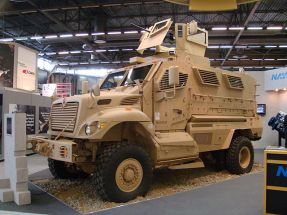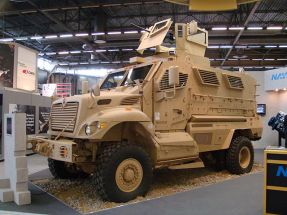
Regarding the Department of Homeland Security’s (DHS) alleged purchases of 2,700 Mine-Resistant Ambush Protected (MRAP) vehicles and billions of rounds of ammunition, I just got off the phone with a fellow named Mike from Congressman Barber’s (D-AZ) office. Congressman Barber is on the House Armed Services Committee. I was concerned about these reported unusual purchases, and I wrote a letter in February. I asked for answers; they investigated. Here is their answer.
Regarding the ammo, I was told that DHS had negotiated five, five-year IDIQ contracts with a cap of 450 million rounds. Last year DHS bought 120 million rounds and used 116 million. They expect to buy a little over 100 million rounds again this year. An IDIQ contract makes these rounds available for purchase by the organizations covered by the DHS umbrella. This includes Customs and Border Protection (CBP), Immigration and Customs Enforcement (ICE), Cost Goard, Secret Service, and more.
This is what I would expect a good contracting officer to do to protect the government and taxpayer dollars. An IDIQ contract locks in a price and does not obligate any minimum order quantities. Having five suppliers protects the government in the event that the suppliers have trouble meeting the demand. It also helps “spread the wealth,” which is often encouraged to avoid falling into sole-source contract problems.
It does mean that DHS could order billions of rounds of ammo. It does not mean that they have bought that much or that they intend to. Government watch groups, please continue to keep your alert eyes open.
As for the 2,717 MRAPs, the Congressman’s office said that the U.S. Marine Corps had indeed ordered 2,717 MRAPs in different configurations from Navistar (this press release calls the order a chassis upgrade). During testing the Marine Corps decided that they did not want one of the configurations and donated 32 of these MRAPs to DHS. DHS in turn gave them to CBP and ICE for serving high-risk warrants.
This also does not seem out of the ordinary. I can easily envision the benign sequence of events leading to this. I would be curious to know the mechanics of how the “donation” happened, but that is only out of a morbid fascination knowing that it is sometimes easier to buy a tank than a printer.
I am satisfied with these answers. Some of these answers had since been covered in other news sources. I appreciate the Congressman’s office being diligent to research the questions and get back in touch with me.

Quality articles or reviews is the important to invite the visitors to go to see the
site, that’s what this web page is providing.
The more you can reduce the damage caused by free radicals with antioxidants, the more your can reduce or even prevent damage.
When our body p – H ( becomes more and more acidic it starts to set
up defense mechanisms to keep the damaging acid from entering our vital organs.
The factors included above determine your Daily energy
expenditure.
Evey weekend i used to visit this web site, as i want enjoyment, for the reason that this this site conations genuinely
good funny stuff too.